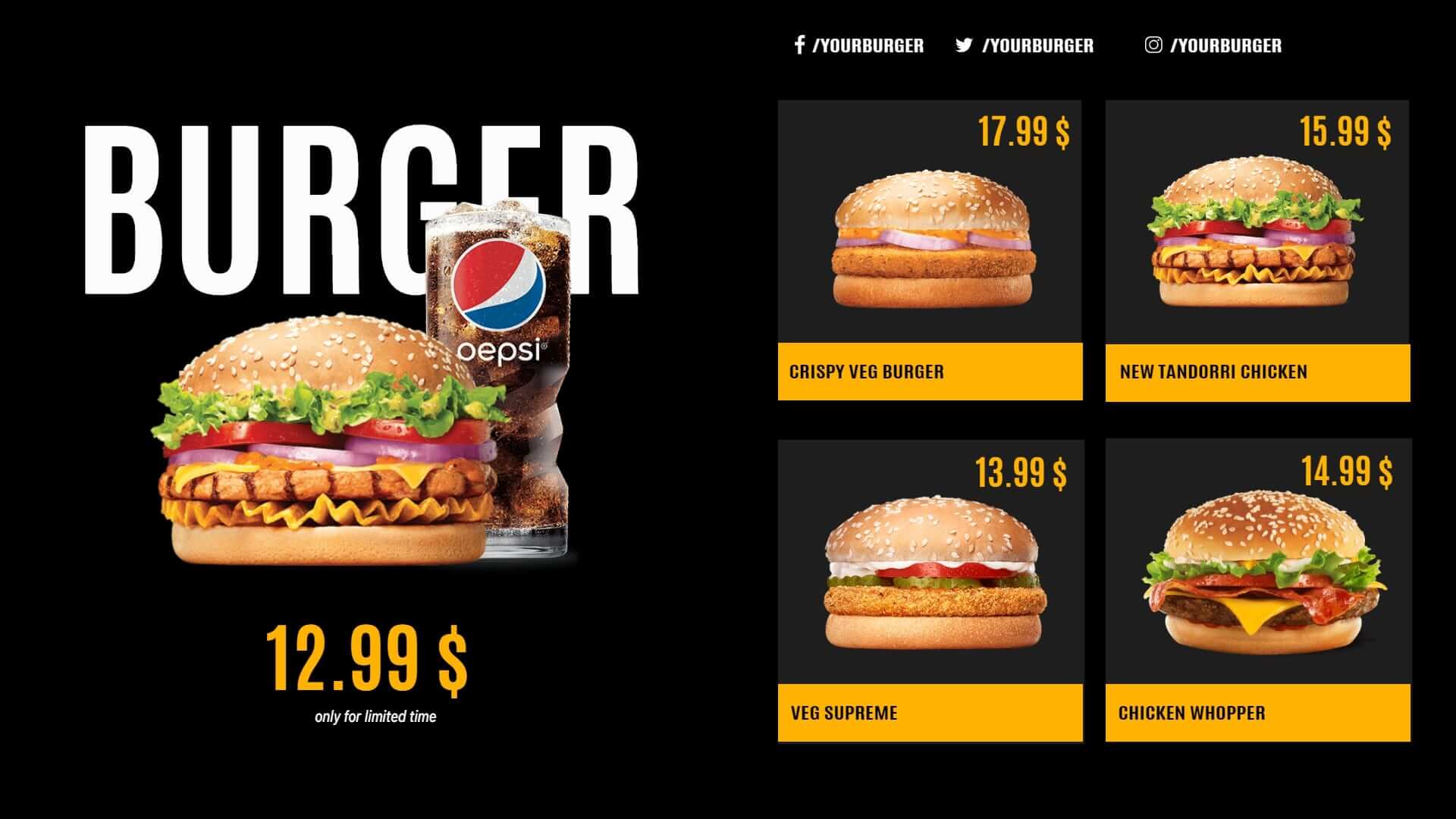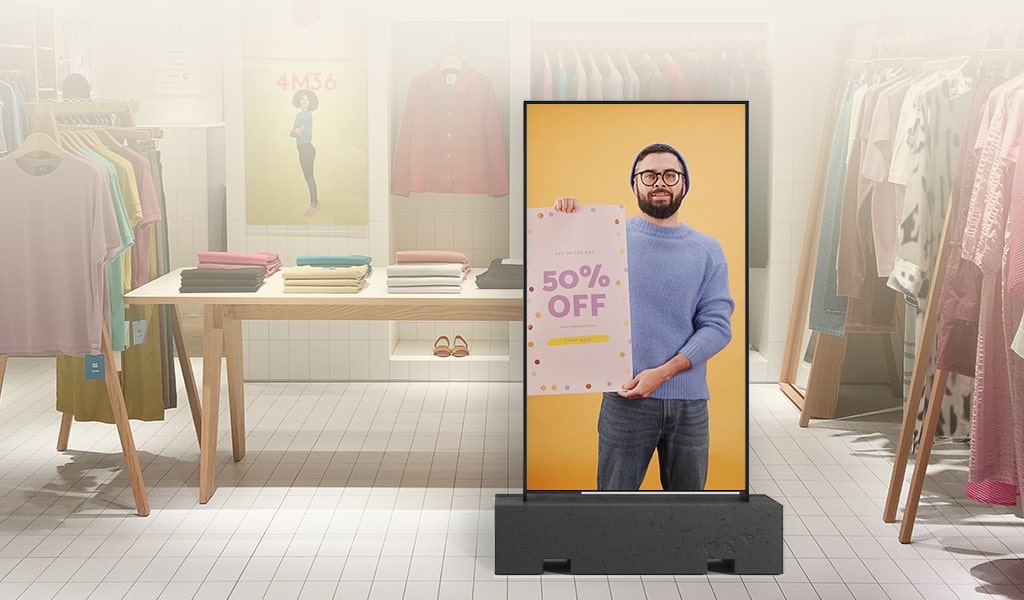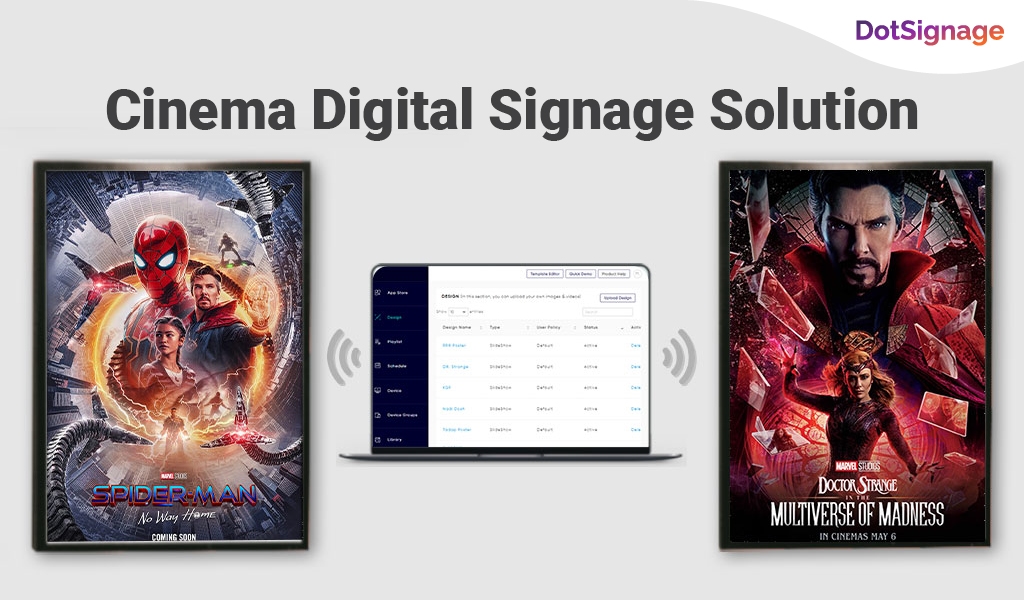Have you ever heard of the term Narrowcasting?
In the world of communication, narrowcasting is like the VIP section. It’s all about sending visual content through a network of digital screens or any other one-to-one mode to reach a specific, handpicked audience.
Recently a lot of businesses use targeted ads. This is a very apt example of narrowcasting.
27% of internet users claim that targeted ads provide the most convenient means of discovering products of interest.
What is Narrowcasting?
Narrowcasting is in a way the opposite of Broadcasting. It’s about pinpoint accuracy – delivering tailored content to the right people, at the right time, and in the right place.
The most common way we see narrowcasting in action is through electronic digital displays, often in public spaces. They’re not just there to add some visual flair; they’re there to deliver tailored messages, whether they’re commercial promotions or important information. It’s like sending a message that’s meant just for you in a world full of billboards and screens.
Here are some precise differences between broadcasting and narrowcasting
| Narrowcasting | Broadcasting | |
| Audience | Segmented target audience | Broader audience |
| Message | Curated for targeted customers | Uniform for all types of audience |
| Communication Modes | one-to-few or one-to-one | one-to-many |
| Reach and coverage | Specific location or demographics | Extensive reach across regions and countries |
What are the best modes to communicate in narrowcasting?

Here are our top 5 modes that can be used for narrowcasting. They are in the top list because they make reaching the segmented market much more easily and quickly compared to other modes.
1. Electronic Digital Displays

Those giant screens grab your eyeballs for a reason. First, they outrightly remove the limitations of billboards.
When you place digital displays in specific spots, you can show interesting stuff to potential customers nearby.
For example, you can use a digital menu boards in your fast-food restaurant to showcase a mouthwatering burger image alongside the menu.
It’s like fashion-forward location-based marketing, instantly changing the content based on where the display is.
2. Email Marketing
Making things personal is what we’re talking about. When you have a tidy client info list, you can send special emails to different groups.
You can set up an email to go out automatically and pick a clever subject, write some catchy words in the email, and before you know it, you’re good to go! It’s all about starting a chat, building trust, and showing your customers they’re important.
3. In-Store Displays

In store displays can help you get a lot of impulse purchases since they are showcasing a product that is already available to purchase nearby.
By displaying specific content that speaks directly to the customers, you are hitting all the points right.
By using vivid images, catchy taglines and displaying user generated content like customer testimonials, digital signage can be put to the right use with in-store displays.
4. Social Media

Your brand’s online presence on social media is like its digital personality. It’s how your business comes across to the world in the online realm.
When you design content that’s specifically tailored to your audience and make use of precise advertising methods, as well as grouping your followers based on their interests and demographics, you can generate a significant amount of traction for your customers. In other words, you’ll make a big impact on your target audience.
By consistently delivering content and messages that resonate with your audience’s unique needs and preferences, you foster a lasting connection that can lead to customer loyalty and sustained brand recognition.
It’s like building a relationship that stands the test of time, ensuring your brand remains relevant and memorable to your customers for years to come.
5. Mobile Apps

Source: swrve
Mobile apps have become powerful tools for narrowcasting, allowing businesses to connect with highly specific target audiences.
By leveraging the capabilities of mobile apps, you can tailor content, messages, and promotions to suit the preferences and behaviors of individual users.
This personalization increases engagement and relevance, enhancing the chances of conversion and customer loyalty.
Mobile apps also enable real-time interaction, push notifications, and location-based services, making it easier to reach users when and where it matters most.
How can Narrowcasting be great for your marketing?
Narrowcasting helps you reach your ideal customer profile or buyer persona the right way.
Rather than sifting through various communication channels without catching the attention of your intended audience, narrowcasting offers a more precise and effective approach. It enables you to connect with the very individuals for whom your product or service has been created.
Narrowcasting narrows down the means of communication, which, in turn, allows for optimal budget allocation and reduced marketing expenses.
This streamlined approach ensures that your marketing budget is invested wisely and delivers results in a targeted and outcome-oriented manner.
In essence, narrowcasting not only minimizes wasted resources but also maximizes the impact of your marketing efforts by directly addressing the specific audience that matters most to your business.
Benefits of Narrowcasting:
Targeted Audience:
Narrowcasting focuses on a precisely segmented and clearly defined audience. The messages used in narrowcasting are carefully crafted to align with the specific needs and interests of this audience.
This tailored approach significantly increases the likelihood of receiving a more favorable response and, in turn, enhances your conversion rates.
It’s like speaking directly to the hearts and minds of those most likely to become your customers, resulting in more meaningful and effective communication.

Example: A newly launched organic beauty brand can target groups of customers who might be interested in organic fragrances at a nominal price via digital signage screen. This can trigger them to give one of them a try and who knows? They might just come back to get a full bottle.
Personalization:
One of the biggest advantages of narrow casting is that it helps you offer content personalization in a very easy way. You can finely adjust your messaging that matches the unique preferences and interests of your ideal customer profile and target customers.
This approach keeps them engaged and attentive to your messaging.
Establishing a strong emotional connection with your audience is important. With segmented messaging created keeping personalization in mind and with the right use of narrowcasting, you can establish a memorable experience for your target customers.
Example: Showing tampon advertisements in women’s restroom displays is a good example of personalization through narrowcasting.
Cost Efficiency:
Narrowcasting allows you to narrow down your target audience, increasing your chances of conversions.
There’s no sense in pouring a big chunk of your advertising budget into broad broadcasting when you can achieve better results with narrowcasting.
Narrowcasting is feasible through digital channels because they typically come with lower production and distribution costs compared to traditional media.
Example: Instead of investing in large billboards, an organic chocolate brand can promote its new product for diabetic patients with small signs at health centers.
Higher Engagement
Narrowcasting has been designed to help you deliver content to the audience it is meant for. So naturally, it will grab the eyeballs of people who are actually looking for a solution being marketed.
By identifying the right touchpoints of a customer in their buyer journey, narrowcasting can be used as the right way to grab higher engagement.
It’s all about being in the right spot at the right time.

Example: There is no point in a beautifully created advertisement for dog food to be displayed at the entrance of a shopping mall. Sure, it will catch attention but not as much. It will be far more noticeable and worthwhile to place it next to a dog food shop or at a veterinary hospital.
Improved ROI
The power of narrowcasting in boosting ROI is straightforward.
When you reach the right people with your message, you increase the chances of them taking action, like making a purchase. This direct connection between narrowcasting and higher conversions means you get more value for your marketing money.
You’re not wasting resources on folks who aren’t interested. It’s like hitting the bullseye with your advertising, making every dollar you spend work harder for you.
Ultimately, narrowcasting helps your marketing efforts pay off better and gives you a stronger return on investment (ROI).
Example: A giant billboard across the street for newly launched sportswear for running would not generate as much of an ROI compared to the same billboard being placed in a central part where people specially come to jog or run.
Geographic Targeting
There have been several case studies about narrowcasting being very effective on geographic segmentation.
Example: One such case study is that of Financial Firms. A marketing tool that has been designed for financial firms needs to be promoted and marketed at financial hubs across the world.
New York, Tokyo or London seems to be an ideal choice when it comes to this. To narrow it down even further, if the headquarters of the company are in the US, they should start by establishing their presence in New York.
There would clearly be no point in spending on promotions of a product in an area where nobody needs it.
Where can narrowcasting be used?
When used right, narrowcasting can be smartly used at all the 5 stages of a customer journey.
Awareness Stage: In-store signage or social media targeted ads can be used at the awareness stage of a customer’s journey with narrowcasting.

The in-store electronic signage display will target the audience who is going to visit the store and is in need of the said product.
Similarly, social media target ads are a good way to peak the interest of customers who might already be looking for or exploring a similar solution.
Consideration Stage: With the use of in-store product demos or interactive kiosks, more detail on your product can be shared which could lead to purchases.
In-store product demos will help a customer understand what specifically the product will offer. This way of narrowcasting hits the nail right where it should.
Interactive kiosks again will help customers delve deeper into the product and get into the specifics of the product.
Decision Stage: By displaying product comparisons or sharing video testimonials, you can aid customers in making their buying decision. A nice way to use narrowcasting at the decision stage.
Product comparisons can be used to help customers decide and make the right choice.
Video testimonials are best when it comes to getting the loyalty and trust of your customers.
They provide real-life endorsements that resonate with potential buyers, offering a personal touch that goes a long way in building credibility and helping customers feel secure in their choice.
Retention Stage: With customer feedback and personalized recommendations, you can take a step ahead to getting customers loyalty and retain them for lifetime.
Customer feedback can help you learn more about your offering and improvise them.
Personalized recommendations can help customers decide better what to buy.
Both of these tricks are part of the narrowcasting magic that keeps customers coming back for more.
Advocacy stage: Using user-generated content as a form of narrowcasting is a clever strategy to attract new business from your existing customer base.
When your customers praise your products on social media or create positive reviews on platforms like YouTube, it’s like having them endorse your brand to their own networks.
These authentic endorsements carry significant weight with potential customers, as they trust the opinions of their peers.
This type of narrowcasting leverages the advocacy stage of the customer journey, turning satisfied customers into influential advocates who not only remain loyal but also actively bring in new business by spreading the word
Conclusion
Narrowcasting is undeniably an essential component of modern marketing strategies. It allows businesses to break through the clutter and directly engage with a carefully defined target audience, delivering tailored content and personalized experiences.
As the digital landscape continues to evolve, the ability to reach the right people with the right message at the right time is paramount.
If you are looking for a seamless digital signage software to manage your marketing content on remotely placed TV screens with ease, reach out at info@dotsignage.com or sign up for our 7 day free trial today.


